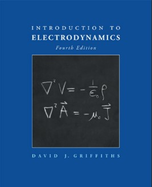A charged particle, traveling in from ??along the x axis,
Chapter 11, Problem 32P(choose chapter or problem)
Problem 32P
A charged particle, traveling in from −∞along the x axis, encounters a rectangular potential energy barrier
Show that, because of the radiation reaction, it is possible for the particle to tunnel through the barrier—that is, even if the incident kinetic energy is less than U0, the particle can pass through.26 [Hint: Your task is to solve the equation
subject to the force
Refer to Probs. 11.19 and 11.31, but notice that this time the force is a specified function of x, not t. There are three regions to consider: (i) x < 0, (ii) 0 < x < L, (iii) x > L. Find the general solution for a(t), v(t), and x(t) in each region, exclude the runaway in region (iii), and impose the appropriate boundary conditions at x = 0 and x = L. Show that the final velocity (v f ) is related to the time T spent traversing the barrier by the equation
and the initial velocity (at x = −∞) is
To simplify these results (since all we’re looking for is a specific example), suppose the final kinetic energy is half the barrier height. Show that in this case
In particular, if you choose the initial kinetic energy is (8/9)U0, and the particle makes it through, even though it didn’t have sufficient energy to get over the barrier!]
Reference prob 11.19
With the inclusion of the radiation reaction force (Eq. 11.80), Newton’s second law for a charged particle becomes
where F is the external force acting on the particle.
(a) In contrast to the case of an uncharged particle (a = F/m), acceleration (like position and velocity) must now be a continuous function of time, even if the force changes abruptly. (Physically, the radiation reaction damps out any rapid change in a.) Prove that a is continuous at any time t, by integrating the equation of motion above from and taking the limit
(b) A particle is subjected to a constant force F, beginning at time t = 0 and lasting until time T . Find the most general solution a(t) to the equation of motion in each of the three periods: (i) t < 0; (ii) 0 < t < T ; (iii) t > T .
(c) Impose the continuity condition (a) at t = 0 and t = T . Show that you can either eliminate the runaway in region (iii) or avoid preacceleration in region (i), but not both.
(d) If you choose to eliminate the runaway, what is the acceleration as a function of time, in each interval? How about the velocity? (The latter must, of course, be continuous at t = 0 and t = T .) Assume the particle was originally at rest: v(−∞) = 0.
(e) Plot a(t) and v(t), both for an uncharged particle and for a (nonrunaway) charged particle, subject to this force.
Reference prob 11.31
(a) Repeat Prob. 11.19, but this time let the external force be a Dirac delta function: F(t) = kδ(t) (for some constant k).25 [Note that the acceleration is now discontinuous at t = 0 (though the velocity must still be continuous); use the method of Prob. 11.19 a) to show that ; Δa = −k/mτ . In this problem there are only two intervals to consider: (i) t < 0, and (ii) t > 0.]
(b) As in Prob. 11.30, check that energy is conserved in this process.
Unfortunately, we don't have that question answered yet. But you can get it answered in just 5 hours by Logging in or Becoming a subscriber.
Becoming a subscriber
Or look for another answer
